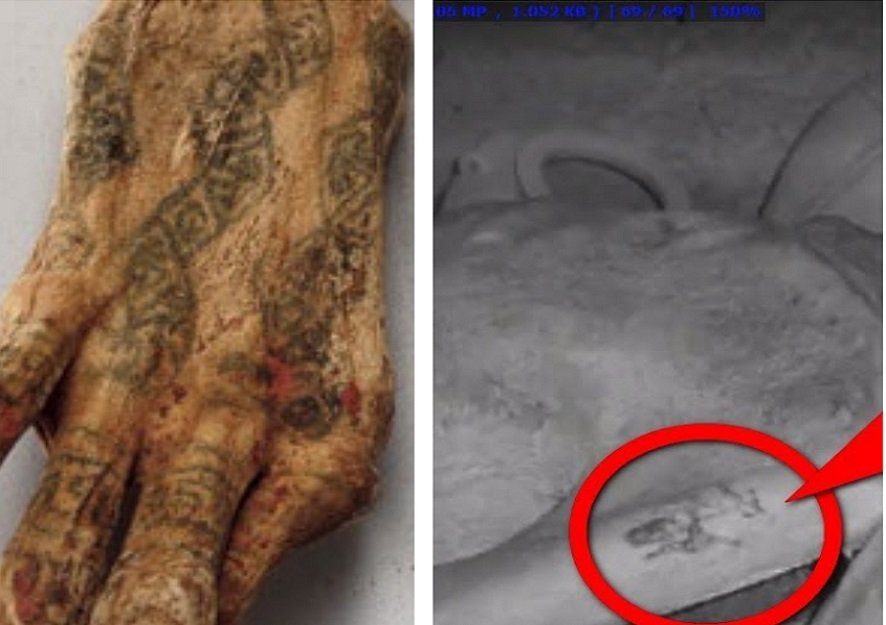Tattoos are considered body modifications where specific designs are made by inserting dyes and pigments into the skin.

Tattoos on a mummy…Pinterest
Tattoos can be decorative, symbolic or pictorial. Then there is the addition of permanent makeup and medical tattoos.
Whatever the reason being for acquiring one, they have become more commonplace in Western societies while still receiving some backlash among members in traditional communities outside of the Western Hemisphere.
Egyptians have been documented as having tattoos as early as 4th century B.C. which they borrowed from Nubia. Reasons vary nonetheless, let’s examine some of the speculated reasons for Egyptians to modify their skin.

‘Tattoo art’ discovered on ancient Egyptian mummies…YouTube
Some historians have guessed that Egyptian women of lower class tended to have tattoos on their skin. Some Egyptologists dismissed women with tattoos as dancers or prostitutes because Egyptian men did not modify their bodies in record numbers.
Nevertheless, women who would be considered of revering stature in society also had tattoos such as high priestess Amunet. Other women whose remains were excavated were emblazoned with tattoos in honor of Hathor – an ancient Egyptian goddess linked to Goddesses’ Isis and Sekhmet. Simply put, women of all social classes tattooed their bodies.
Evidence of tattoos on Egyptians dates back to the Middle Kingdom. Women tended to have bodywork consisting of dots and dashes that were geometrically arranged. The same designs were also found on fertility dolls. Some women adorned the designs to become more fertile or if they were having trouble becoming pregnant.
The body art was also thought of as a way to protect the unborn child; a barrier between the outside world and the environment of the baby. The image of Bes, a God who shielded pregnant women and was credited as being the god of sexuality, fertility, humor and joy, was found on the inner thighs of women.

Tattoo on the hand of an Egyptian mummy…Tumblr
Body art has been found on throats, arms, torso, lower back and legs with images of lotus blooms, cows, snakes and the Wadjet. The aforementioned was also referred to as the Eye of Horus and it symbolizes protection, royal power and good health.
Tattoos were administered by older women learned with information about the significance of images and the colors used; they used instruments with metal points that included wooden handles. Some tattoo kits had bronze needles. Black, green and blue pigment was used on the skin. The hues represented fertility, life, birth and rebirth.
All in all, tattoos were worn by a majority of women of all walks of life for beautification purposes and for divine protection. What is now a form of art was once a necessity for the Egyptians.










